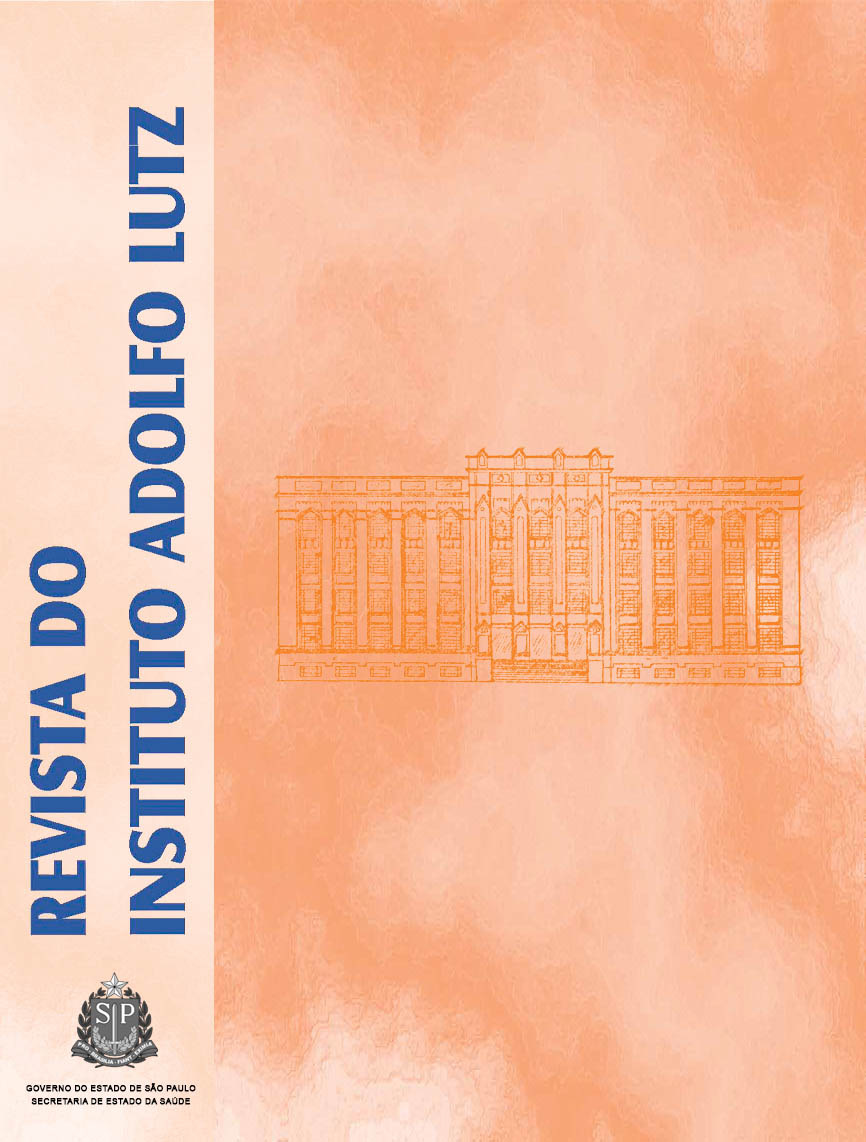Abstract
Physical-chemical analyses of water used in hemodialysis systems are very relevant tools for evaluating such systems. These analyses must be periodically done. For this study 36 water samples collected from hospitals A and B during the summer and winter of 2003 were analyzed. The samples were collected from P1 incoming public treated water from city water mains (18 samples), and from P2 after reverse osmosis treatment (18 samples). Fluoride, sulfate, nitrate and conductivity analyses were performed according to the methodology recommended by Standard Methods for the Examination Of Water And Wastewater, 1995,and by the local standards "Normas Analíticas do Instituto Adolfo Lutz",1985. Bacteria endotoxins were determined in 18 samples from P2 according to the "United States Pharmacopeia". In both services, after reverse membrane osmosis processing during winter and summer significantly decreased the amount of ions fluoride, sulfate, nitrate, and conductivity in the water sample from P3 (p< 0,001), according to RDC Nº154/2004. During the winter the water conductivity increased in both services, 2.85% in A and 24.23% in B. Bacteria endotoxins were only detected in A service during summer in two samples. These results showed that physical-chemicals parameters were important to evaluate the efficacy of reverse membranes osmosis in both services, as it significantly reduced the studied ions concentration. Providing high quality water to hemodialysis system is an accurate procedure for preventing risks to the patients.References
1 . Oie, S. et al. Microbial contamination of dialysate and its preventionin haemodialysis units. J. Hospital Infection 2003, 54:115-9.
2 . Pisani, B. et al. Surto de bacteriemia por Pseudomonas aeruginosa na Unidade de Hemodiálise de um hospital de Campinas, São Paulo, Brasil. Rev Inst Adolfo Lutz 2000; 59(1/2): 51-6.
3. São Paulo, Secretaria de Estado da Saúde, Centro de Vigilância. Roteirode Inspeção da Vigilância Sanitária de Serviços de Terapia renal Substitutiva, 1997.
4. Silva, A.M.M. et al. Revisão/Atualização em Diálise: Água para hemodiálise. J Bras Nefrol 1996; 18 (2):180-8.
5. Amato R.L. Water Treatment for Hemodialysis, Including the Latest AMMI Standards. J Neprol Nurs 2001; 28:612-9.
6. Azevedo S.M. et al. Human intoxication by microcystins during renaldialysis treatment in Caruaru-Brazil. Toxicology 2002; 182:441-6.
7. Favero, M.S. et al. Dialysis-associated infections and their control. J Hospital Infection 1998; 24:357-78.
8. Brasil, Agência Nacional de Vigilância Sanitária, Resolução Diretoria Colegiada Nº154, de 15 de junho de 2004 - Diário Oficial da União, Brasília, 17 de Junho de 2004; Seção 1, p.65-69.
9. Sociedade Brasileira de Nefrologia - censos. Disponível em: URRL:http://www.sbn.org.br/ . Pesquisa realizada em março de 2004.
10. Eaton, A.D. et al. American Public Health Association (APHA). Standard Methods for Examination of Water and Wastewater, 19th ed.1995,Washington, DC, 1995,19th ed.
11. Instituto Adolfo Lutz. Normas Analíticas do Instituto Adolfo Lutz: Métodos Químicos e Físico para Análise de Alimentos. São Paulo.3a.ed., Sulfato e Nitrato, 1985; V.1, p.302-30.
12. USA, Pharmacopeia, USP XXIV, Rockville, Twinbrook Parkway, Bacterial Endotoxins Test, 1995; 24:1829-30
13. Brasil, Portaria n° 518, de março de 2004, Gabinete do Ministro –Ministério Da Saúde, Diário Oficial da União n° 59 de 26/03/2004, Seção 1, pág. 266 –70.
14. Center For Disease Control & Prevention, USA e World Health Organization, Geneva, Switzerland. Epi Info 6, 1994; version 6.02.
15. USA, Association for the Advancement of Medical Instrumentation. American National Standards Institute, USA , Inc. Hemodialysis Systems. ANSI/AAMI RD5,1992; 27-58.
16. Monge, R. et al. Estacionalidad de parásitos y bacterias intestinales en hortalizas que se consumen crudas en Costa Rica. Rev Biol Trop 1996;44:369-75.
17. Simões, M. Leveduras, Pseudomonas aeruginosa e bactérias heterotróficas em água de diálise. São Paulo, 2004 [Dissertação deMestrado – Coordenação dos Institutos de Pesquisa da Secretaria de Estado da Saúde de São Paulo, Instituto Adolfo Lutz].
18. Nanopure Dlamond UF. Ultrapure water system Operation Manual Series 1192, UKA, 2000.

This work is licensed under a Creative Commons Attribution 4.0 International License.
Copyright (c) 2005 Instituto Adolfo Lutz Journal
